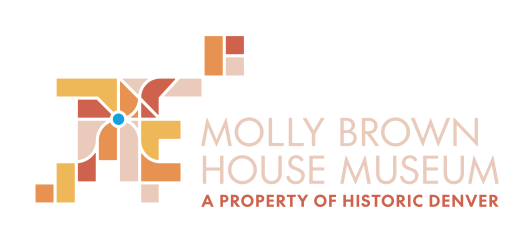THE WOMAN’S BUILDING AT THE COLUMBIAN EXPOSITION OF 1893
When the Brown family discovered their fortune from the Little Johnny gold mine in Leadville, Colorado, they celebrated their newfound wealth by taking a trip around the United States. On their vacation, they stopped in Chicago to enjoy the Columbian Exposition of 1893.[1] The Exposition, also known as the World’s Fair, celebrated the 400th anniversary of the arrival of Christopher Columbus. The Fair highlighted American progress and cultural diversity. Booths represented Celtic, Arabian, Asian, African cultures, and several others. Margaret was captivated by this display of culture, and it inspired her to set up her Carnival of Nations fundraiser in a similar fashion.[2] The Exposition also featured an expansive building specifically created and designed to display accomplishments of women from across the world.
A Board of Lady Managers was organized to determine how women would be represented at the fair. At first there was some debate whether women’s accomplishments should be integrated among the men’s, but The Board agreed women would be best represented in a separate Woman’s Building. Bertha Palmer, the head of The Board, chose female architect Sophia Hayden to design and construct the Woman’s Building. Hayden, a recent MIT graduate, was under immense pressure to create a building that successfully represented women of the late 19th century. The final product, built in Italian Renaissance style, was met with controversial reviews from architectural journals and the public. Some critics thought the building was too simple and unassertive compared to the male-designed buildings at the fair. Other criticized the building for being too feminine and delicate.[3] Hayden was subjected to such intense scrutiny as for the Woman’s Building that she never practiced architecture again.[4]

Sophia Hayden: Women’s Building, 1893
https://www.radford.edu/~rbarris/Women and art/amerwom05/columbianexpostion.html
The Board devoted the interior of the building to women’s successes in arts, literature, and culture. The building included a library that featured 7,000 books by female authors, including 47 translations Harriet Beecher Stowe’s Uncle Tom’s Cabin.[5] The building hosted a large conference attended by about 200,000 women that focused on a variety of “women’s topics”, the most popular being a session on women’s clothing and dress reform.[6] The Board was also very intrigued and excited about the shifting roles of women in the work place across the world, and they sought to learn more about, “the new avenues of employment that are constantly being opened to women, and in which of these they are most successful by reason of their natural adaptability”.[7] They Woman’s Building displayed a wide range of items produced and invented by women, from mechanical dusters to Spanish cigarettes rolled by female laborers.[8] Women were finally getting public recognition for their accomplishments and contributions to society.
Many women saw the Women’s Building as a historical breakthrough for females. Bertha Palmer believed that the Woman’s Building was a sign that, “The General Government just discovered women.”[9] Though it was monumental that women’s accomplishments were finally recognized in such a public forum, the Woman’s Building and its contents were still considered a second-class category to men. Separating women’s achievements from the main displays of the fair shows that women were still not considered a fully integrated part of mainstream American culture. However, it was certainly a step in the right direction.
Written and Researched by Maddy Bollinger
[1] Iversen, Kristen. Molly Brown Unraveling the Myth. Boulder: Johnson Printing, 1999.
[2] Ibid
[3] Nichols, K.L.. “The Women’s Building: 1893 Chicago World’s Fair & Exposition.” . Arcadia. Web. 1 Aug 2013. <https://arcadiasystems.org/academia/cassatt5.html>.
[4] Dr. Barris, Roann. “The Columbian Exposition and the Woman’s Building, Chicago, 1893.” . Radford University. Web. 1 Aug 2013. <https://www.radford.edu/~rbarris/Women and art/amerwom05/columbianexpostion.html>.
[5] Nichols, K.L.. “The Women’s Building: 1893 Chicago World’s Fair & Exposition.” . Arcadia. Web. 1 Aug 2013. <https://arcadiasystems.org/academia/cassatt5.html>.
[6] Dr. Barris, Roann. “The Columbian Exposition and the Woman’s Building, Chicago, 1893.” . Radford University. Web. 1 Aug 2013. <https://www.radford.edu/~rbarris/Women and art/amerwom05/columbianexpostion.html>.
[7] Howe, Maude Elliot. Art and Handicrafts in the Woman’s Building. Paris & New York: Bousson, Valadon, & Co., Successors, 1893.
[8] https://arcadiasystems.org/academia/cassatt5.html
[9] “World’s Columbian Exposition in Chicago, 1893.” Women Working, 1800-1930. Harvard University Library Open Collections Program. Web. 1 Aug 2013. <https://ocp.hul.harvard.edu/ww/columbia.html>.
Updated 9/18/22
